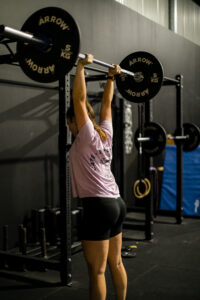In the world of fitness, two prominent training methodologies, functional strength training and bodybuilding, stand out. While both approaches share the common goal of improving strength and enhancing physical fitness, they differ significantly in their focus and execution. Understanding the distinctions and recognising how they can complement each other is crucial for individuals seeking a comprehensive approach to strength, fitness, and muscle development.

Functional Strength Training:
Functional strength training revolves around movements that mimic real-life activities, emphasizing the development of strength that can be directly applied to daily tasks and sports. Key characteristics of functional strength training include:
- Multi-Joint Movements:
- Exercises involve multiple joints and muscle groups working together in a coordinated manner.
- Balance and Stability:
- Emphasis on improving balance and stability to enhance overall functional fitness.
- Versatility:
- Incorporates a variety of movements that challenge the body in different planes of motion.
- Core Engagement:
- Places a strong emphasis on activating and strengthening the core muscles.
Bodybuilding:
Bodybuilding, on the other hand, is a training approach focused on hypertrophy and aesthetic muscle development. Key features of bodybuilding include:
- Isolation Exercises:
-
- Targets specific muscle groups through isolation exercises to promote muscle growth and definition.
- Volume Training:
- Involves high-repetition and high-volume training to induce muscle hypertrophy.
- Progressive Overload:
- Prioritizes consistently increasing resistance over time to stimulate muscle growth.
- Aesthetic Focus:
- Concentrates on achieving a well-defined and proportionate physique.
- Concentrates on achieving a well-defined and proportionate physique.
Benefits of Functional Strength Training:
- Real-Life Application:
- Improved strength and endurance directly translate to enhanced performance in daily activities and sports.
- Injury Prevention:
- Focus on multi-joint movements and stability reduces the risk of injuries by promoting balanced muscle development.
- Functional Core Strength:
- Develops a strong and functional core, which is crucial for overall stability and balance.
Benefits of Bodybuilding:

- Muscle Hypertrophy:
- Targeted muscle isolation exercises promote muscle growth and aesthetic development.
- Defined Physique:
- Bodybuilding helps achieve a well-defined and sculpted physique, emphasizing symmetry and proportion.
- Metabolic Benefits:
- Increased muscle mass contributes to a higher resting metabolic rate, aiding in fat loss and weight management.
Synergy between Functional Strength Training and Bodybuilding:
- Comprehensive Fitness:
- Integrating both approaches ensures a well-rounded fitness routine, combining the practical strength gained from functional training with the aesthetic benefits of bodybuilding.
- Injury Resilience:
- Functional strength training can enhance joint stability, reducing the risk of injuries during bodybuilding workouts by providing a solid foundation.
- Versatility and Adaptability:
- Combining functional movements with bodybuilding allows for versatility in training, adapting to different fitness goals and preferences.
- Mental Resilience:
- The diversity in training approaches keeps workouts engaging and mentally stimulating, fostering long-term adherence to a fitness routine.
While functional strength training and bodybuilding may seem distinct, they are not mutually exclusive. Integrating both methodologies into your fitness regimen creates a synergistic approach, fostering overall strength, functional fitness, and aesthetic development. Embrace the versatility offered by this combination to tailor your workouts to your specific goals, ultimately unlocking the full spectrum of benefits for a balanced and sustainable fitness journey
